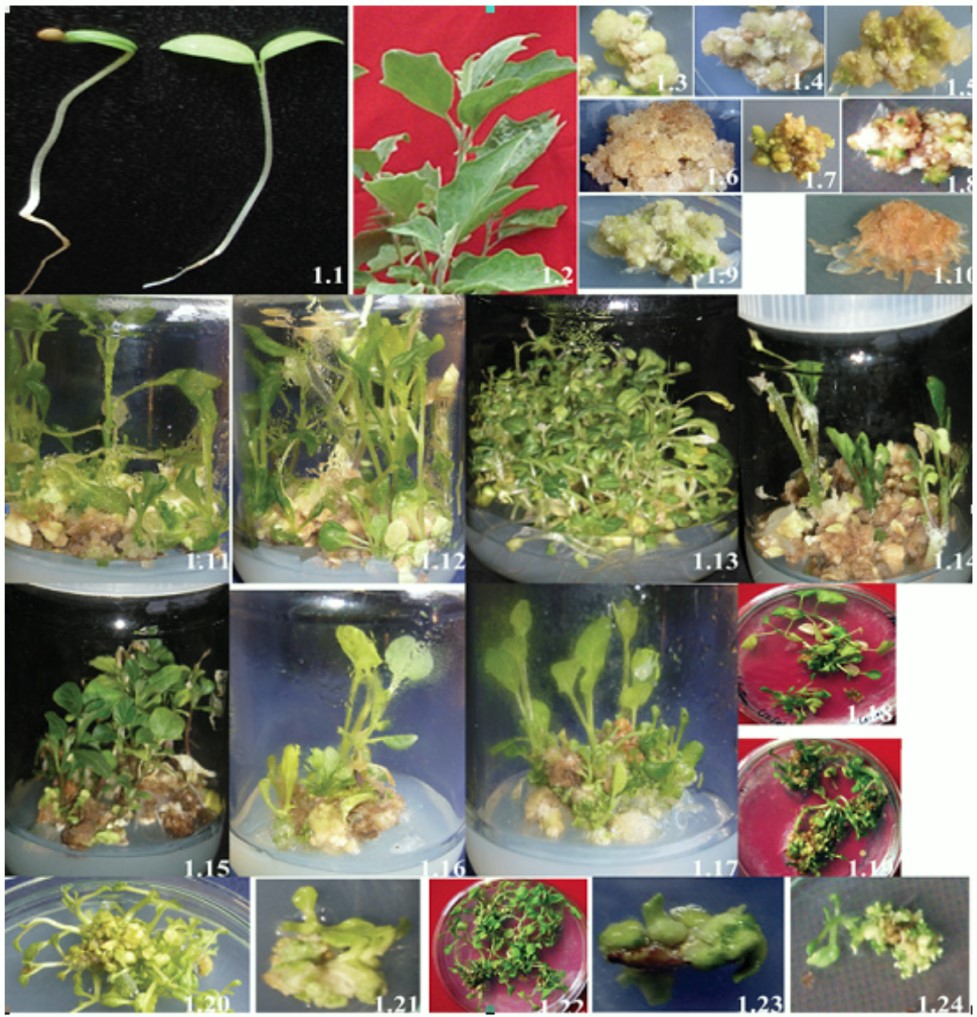Effect of Genotype, Explant and Hormonal Concentration on in Vitro Response of Eggplant
DOI:
https://doi.org/10.15835/nsb234710Keywords:
genotype, developmental window, Solanum, S. trilobatum, S. indicum, S. surattense, S. melongenaAbstract
Three wild relatives Solanum: S. trilobatum L. (P1), S. indicum L. (P2), S. surattense Burm F. (P3) and four cultivars of S. melongena L.: ‘Pusa Kranthi’ (P4), ‘Pusa purple long’ (P5), ‘Pusa purple cluster’ (P6) and ‘Green round’ (P7) were evaluated for their callus induction frequency, total callus quantity, embryogenic callus quantity and plant regeneration ability. The present experiment revealed that in vitro response was significantly affected by the genotype, hormonal concentration and age of the explants. Cotyledon at walking stick stage of explants responded more than the opened leaves stage in all genotypes except in P1. Out of seven genotypes, P3 exhibited the highest callus induction, E-callus and regeneration response followed by P5 while highest total callus quantity obtained in P4. MS medium supplemented with 2 mg/l NAA+2.5 mg/l BAP was optimum for callus initiation, total callus quantity and embryogenic callus formation, and MS medium supplemented with 2.5 mg/l each BAP and KN were optimum for regeneration. Rooting of shoots occurred on half strength MS medium supplemented with 1 and 1.5 mg/l IBA respectively. The rooted plant lets were well accomplished with a survival frequency of 85.5±5%. Moreover, there were no phenotypic differences observed between the in vitro regenerated and in vivo plantlets.
Metrics

Downloads
Published
How to Cite
Issue
Section
License
Papers published in Notulae Scientia Biologicae are Open-Access, distributed under the terms and conditions of the Creative Commons Attribution License.
© Articles by the authors; licensee SMTCT, Cluj-Napoca, Romania. The journal allows the author(s) to hold the copyright/to retain publishing rights without restriction.
License:
Open Access Journal - the journal offers free, immediate, and unrestricted access to peer-reviewed research and scholarly work, due SMTCT supports to increase the visibility, accessibility and reputation of the researchers, regardless of geography and their budgets. Users are allowed to read, download, copy, distribute, print, search, or link to the full texts of the articles, or use them for any other lawful purpose, without asking prior permission from the publisher or the author.













.png)















